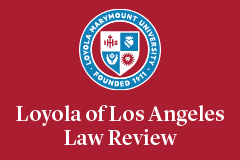Abstract
Since reinstating the death penalty in 1978, California taxpayers have spent roughly $4 billion to fund a dysfunctional death penalty system that has carried out no more than 13 executions. The current backlog of death penalty cases is so severe that most of the 714 prisoners now on death row will wait well over 20 years before their cases are resolved. Many of these condemned inmates will thus languish on death row for decades, only to die of natural causes while still waiting for their cases to be resolved. Despite numerous warnings of the deterioration of California’s capital punishment system and its now imminent collapse, the Legislature has repeatedly failed to enact measures that would improve this death row deadlock. At the same time, voters have continued to expand the death penalty through the direct voter initiative process to increase the number of death-eligible crimes.
This Article uncovers the true costs of administering the death penalty in California by tracing how much taxpayers are spending for death penalty trials versus non–death penalty trials and for costs incurred due to the delay from the initial sentence of death to the execution. In addition, the Article examines how the voter initiative process has misled voters into agreeing to the wasteful expenditure of billions of dollars on a system that has been ineffective in carrying out punishment against those who commit the worst of crimes. Our research reveals that in every proposition expanding the list of deatheligible crimes between 1978 and 2000, the information provided by the Legislative Analyst’s Office in the Voter Information Guides told voters that the fiscal impact of these initiatives would be “none,” “unknown,” “indeterminable,” or “minor.” Relying, at least in part, on this information, Californians have used the voter initiative process to enact “tough on crime” laws that, without adequate funding from the Legislature to create an effective capital punishment system, have wasted immense taxpayer resources and created increasingly serious due process problems.
Finally, this Article analyzes corrective measures that the Legislature could take to reduce the death row backlog, and proposes several voter initiatives that California voters may wish to consider if the Legislature continues to ignore the problem. It is the authors’ view that unless California voters want to tolerate the continued waste of billions of tax dollars on the state’s now-defunct death penalty system, they must either demand meaningful reforms to ensure that the system is administered in a fair and effective manner or, if they do not want to be taxed to fund the needed reforms, they must recognize that the only alternative is to abolish the death penalty and replace it with a sentence of life imprisonment without the possibility of parole.
Recommended Citation
Judge Arthur L. Alarcón & Paula M. Mitchell,
Executing the Will of the Voters?: A Roadmap to Mend or End the California Legislature’s Multi-Billion-Dollar Death Penalty Debacle,
44 Loy. L.A. L. Rev. S41
(2011).
Available at: https://digitalcommons.lmu.edu/llr/vol44/iss0/1


